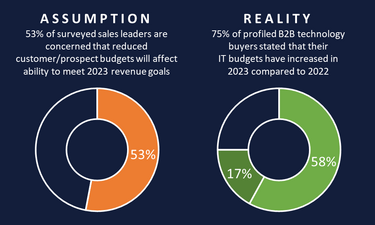Assumption vs. Reality: A Cautionary Tale for Prospecting

Humans make assumptions when it’s difficult to ascertain the facts. At BAO, we know the value of gathering relevant facts about prospect accounts, because that’s the very basis of our Opportunity Identification (OppID) service. If you’re new to OppID, you might be wondering how we gather those facts. The answer, while not necessarily easy, is simple: We call the organizations and ask the people who know the answers. Clients love this service because it gives them intelligence about their target market so they can prospect with confidence, not guesswork.
Something happened recently that really brought home how far apart assumptions can be from reality.
We got two data points from two different sources that, when brought together, tell a fascinating story about assumption vs. reality happening right now.

Let’s map out a potential path for two competitors going after the same ideal customer profile (ICP). Company A is operating on the assumption that IT budgets are decreasing, while Company B works with BAO to profile target accounts.
Which company are you likely to be more favorably disposed to work with?
Evidence beats gut every time. Don’t make assumptions about your audience that could be misleading—and potentially put you at a competitive disadvantage. With BAO’s OppID, you not only know what’s actually happening in your target market, you have the facts about individual prospects so you can significantly increase sales rep productivity and your chances of sales success.